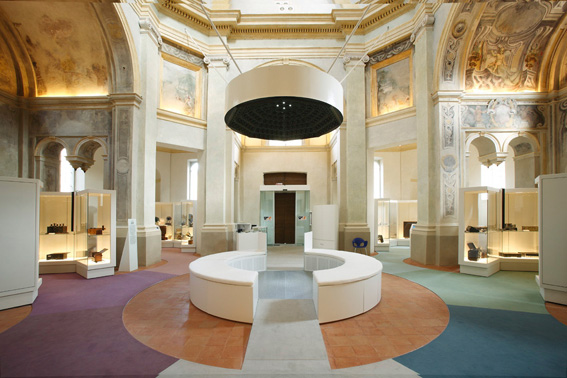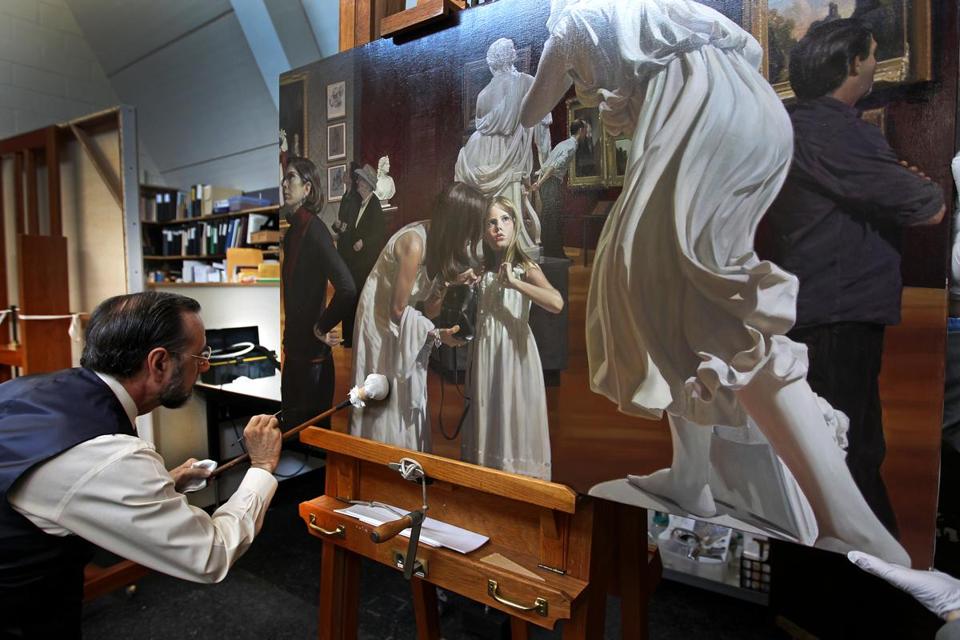Museums, and all arts institutions, focus on reaching and engaging their audiences. For some it may mean reaching a broader audience while others are looking for a deeper relationship with their current audience. No matter the motivation, art museums face the daunting task of turning these desires into actionable and measurable endeavors. For some organizations, deep investments in technology may be a part of the solution. AMT Lab's latest publication, Gallery One at the Cleveland Museum of Art: Connecting Audiences to Art Through Technology uses WolfBrown's WolfBrown’s “Making Sense of Audience Engagement” framework to explore the Cleveland Museum of Art’s Gallery One initiative and to show how technology is able to reach a wide audience by filling diverse needs of engagement.
An Introduction to Open Badges
This is the second research update in a larger series about the future of digital micro-credentials in the arts. In this update, AMT Lab Correspondent Jackie Shimshoni introduces Mozilla's Open Badges, how they differ from digital badges, and the types of metadata that can be shared using this valuable tool.
#TBT: Highlighting New Media Art
While technology and art combine frequently to facilitate the practices of arts managers, they are simultaneously blending to create a whole new artform--new media art. All bets are off with this medium, as an array of tools, approaches and capabilities make it impossible to label as either visual or performance; in many cases, the art goes even farther and provides a social benefit to those who experience it. This week’s TBT provides managers with a roundup of the research we’ve done so far to start piecing together a picture of what new media art means for the future of management in all types of arts venues and forums.
STEAM Learning at the Carnegie Science Center
Moving the conversation around public education from STEM (Science, Technology, Engineering, and Math) to STEAM (Science, Technology, Engineering, Arts, and Math) has long beleaguered arts managers and arts educators alike. Defending the argument for arts programming and arts education can be difficult in the face of shrinking school budgets and a highly competitive grant environment. Particularly in a country that increasingly favors the hard sciences above the humanities, cultural pursuits, and artistic studies. Despite gains at the federal level with the new core arts standards, the STEAM caucus, and the first budget increase for the National Endowment for the Arts in years, it is still easy to feel defeated. The question remains, what can arts leaders and community organizers do at the local level to push the conversation in a positive direction?
News Summary 01.2015
Research Update #2: Best Practices of Facebook
Per Moz.com Facebook had reached unprecedented levels of popularity, with “1.19 billion monthly active users”, and over 750 million monthly mobile users. These figures underscore why Facebook is such an important communication channel for arts organizations. However, different organizations will have different objectives when managing their Facebook pages. I covered some general best practices in my first research update, but channel specific best practices also exist. To demonstrate how tactics might differ between organizations, I will us three museums: The Met, the Warhol, and Tate to provide specific examples.
News Summary 10.2014
Every month, AMT Lab publishes a collection of recent arts management and technology news. This month, many articles focused on how the latest technologies, such as 3D printing, can be used to create art. Technology has had a profound impact on cultural industries, and as always we are deeply interested in following these trends.
Viewpoint of Billions
Wearable technology is all anyone is interested in talking about these days, and certainly AMT Lab is no different (for example, see Performing Arts in the Wearable Age). I’d like to take a brief interlude from gossiping about when Apple’s smart watch is going to drop to refocus on an “older” wearable technology: Google Glass.
Let me preface this by saying I am not an Explorer (or a Glasshole–whichever floats your boat) but as a casual observer of technology, I’ll jump at the chance to try something new. Like Google Glass. So when the National Portrait Gallery offered me (and the rest of DC) the chance to do just that, you bet I went for it.
HintMe: a Shared Mobile Museum Platform on Twitter
FIRST: I want to direct you to this website where you can read an interview about HintMe with Merete Sanderhoff, a researcher at the National Gallery of Denmark, and a case study about the Danish museums using Twitter. But for the fast facts…
Who: The National Gallery of Denmark (Statens Museum for Kunst) and 11 additional Danish art museums.
What: HintMe is a shared mobile platform with the aim of opening up museums' collections by making content re-useable and freely sharable. At the same time, the platform has the potential to increase user engagement with the museum, its artwork, and between visitors themselves. Here is why it is brilliant: HintMe makes use of an existing platform, Twitter, and a style of communication that has become increasingly familiar and popular, the hashtag. #sohotrightnow
Modern Website Design: The Rijksmuseum
What art museums do you know with great websites? The Walker Art Center? MoMA? Can you name any that do not focus on contemporary or modern collections?
Spoiler alert: I can - the Rijksmuseum.Yes, I am on a Rijksmuseum kick.
In honor of the Rijksmuseum’s gorgeous restoration, let’s talk about how an art museum with an extensive traditional collection can successfully leverage good website design. I would argue that a contemporary or modern collection is not a prerequisite for an engaging website.
A Digital Art Collection: LACMA and the Rijksmuseum
There’s something neat about looking at your favorite work of art online. Services like the Google Art Project and Painting Portal allow users to view a multitude of works from around the world. You can zoom in way closer than you’d ever be allowed to be in a museum. You can return to the images online whenever you want, without paying an entry fee. And the latest trend we’re seeing, you can download the images for whatever you want.
GPS Indoors: ByteLight's Indoor Positioning System at Boston's Museum of Science
Who: Dan Ryan and Aaron Ganick, the founders of ByteLight, a Cambridge, Massachusetts start-up. What: A positioning system using LED lights enabled with the capacity to broadcast location data in indoor spaces, in real time, and without WiFi or GPS. Little satellites, if you will.
Crowd-Sourced Curating at the Brooklyn Museum
As the arts world continues to discuss and reconsider what it means to participate in the arts, the Brooklyn Museum is testing a new construct of audience engagement with its current exhibit GO: A Community-Curated Open Studio Project. GO combines two existing tactics: inviting the public into studios of working artists to see where and how artwork is made, and crowdsourcing the selection of that artwork through an open voting process. Unlike ArtPrize, an art competition in Grand Rapids, MI, that awards cash prizes to artists as determined by public vote (juried awards were added in 2012) and cited by the Brooklyn Museum as inspiration for the current exhibit, GO asks participants to nominate artists—rather than specific pieces—whose work they would like to see exhibited at the museum. The catch is that to be eligible to vote, participants must first visit at least five artist studios, which in turn requires that the museum be able to track where people go. The answer is a multiphase project begun this past September and culminating in an exhibit of Brooklyn artists, on display through February 24.
To participate, the museum first asked individuals to register on the GO community project website. Then, over a two-day open studio event involving nearly 1,800 artists in 46 Brooklyn neighborhoods, participants “checked-in” at each studio visited by way of a unique number displayed onsite. By sending that number to the museum either by text message, a free custom iPhone app, or the web, participants documented where they traveled. Those who checked-in at five or more studios received an email with instructions on how to vote, having earned the opportunity to nominate up to three artists. The museum tallied the results, sent two of its curators to review the work of the top ten nominated artists, and selected five to exhibit.
But GO didn’t stop when the voting was done. By asking participants to check-in, the museum was able to analyze how many people went where, when, and what platform they used to check-in, all of which was then shared in a series of posts on both the GO blog and through the Statistics section of the GO website. (Among those findings: Despite multiple mobile-friendly options designed especially for the event, nearly half of the 6,100+ participants chose to simply write down studio numbers throughout the day and check-in via the project website once back home, surprising project coordinators.) The website also provided a forum for participants to discuss (in real time and afterward) what they did and did not like about the process, share stories from their studio visits, learn about nominated artists, receive updates on the creation of the exhibit, and provide reactions to the final exhibit itself.
The exhibit has been criticized by some for not aptly representing the rich artistic quality Brooklyn holds, and is generating commentary on the age-old curatorial question of who should decide what constitutes “good” art. While a worthwhile debate, it seems to belie the larger point of the project: to expose people to the creative process, and ideally, to facilitate a better understanding of it. On that score, GO appears to have succeeded mightily. As project coordinators tagged entries in the Shared Stories section of the website, one of the most frequent themes to emerge was that of discovery. It seems that by opening studio doors, inviting people to participate in the curatorial process, and sharing reactions online, GO fostered meaningful interactions among artists, voters, volunteers, and museum staff, and in the process, created an innovative approach to engage audiences in the arts.
As You Consider a Web Page Redesign...
You might do well reading this article on museum website recent redesigns and considering the statistics from a recent patron study. http://www.artsjournal.com/realcleararts/2013/01/museum-websites-are-getting-better-but-i-have-two-pet-peeves.html
This Exquisite Forest: A Collaborative Project from Google Chrome and London's Tate Modern
Perhaps you played the French Surrealist game, ‘The Exquisite Corpse,’ in grammar school using the week’s vocabulary words or at a sleepover, 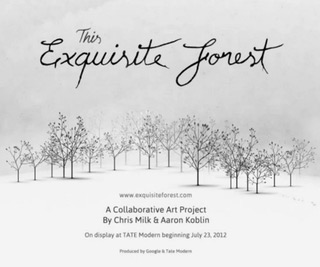 where someone inevitably managed to take the game in an inappropriate direction (wasn’t me, I swear).
If you do not recognize the creative exercise by its proper name, you will by its concept: a person begins a sentence or drawing on a piece of paper, covers their creation, passes the paper to the following person, and so the game continues until all participants have contributed. The final ‘masterpiece’ is often a comical, nonsensical, and potentially inappropriate, Dadaist anti-creation.
where someone inevitably managed to take the game in an inappropriate direction (wasn’t me, I swear).
If you do not recognize the creative exercise by its proper name, you will by its concept: a person begins a sentence or drawing on a piece of paper, covers their creation, passes the paper to the following person, and so the game continues until all participants have contributed. The final ‘masterpiece’ is often a comical, nonsensical, and potentially inappropriate, Dadaist anti-creation.
In July, Google’s Creative Lab teamed up with London’s Tate Modern Museum and launched the online collaborative project, “This Exquisite Forest.” Borrowing the game’s concept from the Surrealists, “This Exquisite Forest” enables users to draw or animate their own short animations (using Google Chrome browser) based on the initial “seeds” created by the artists Miroslaw Balka, Olafur Eliasson, Dryden Goodwin, Ragib Shaw, Julian Opie, Mark Titchner, Bill Woodrow, and Film4.0’s animators. One difference between the Surrealist’s version of the game and this project is the fact that online participants will have access to what was contributed before their own addition (as opposed to the Surrealist game where each participant's contribution is covered before moving on).
[embed]http://www.youtube.com/watch?feature=player_embedded&v=nnhJ1841K-8[/embed]
As users add their own animations and visual narratives using a web-based drawing tool, “the videos dynamically branch out and evolve, forming multiple new visuals.” From this idea- of initial videos or “seeds” planted by Tate’s artists- and the additional sequences branching out to create trees, this collaborative online project was coined “This Exquisite Forest.”
The project exists both in the digital realm and in the physical world. Large-scale projections of the best of the online contributions are displayed in the Level 3 gallery of the Tate Modern. In-house visitors have the opportunity to view the animations and contribute their own additions using digital drawing stations in the gallery.
“This Exquisite Forest” does three things expertly:
1) Allows museum-goers and web-users to become creators and curators, not just passive consumers of art
2) Provides a forum for the global, online community to collaborate creatively
3) Markets Google’s web browser Chrome, Google App Engine, and Google Cloud Storage
The physical installation at the Tate will run until January 2013 (approximately).
The Gelato Museum: I think a second visit is in order...
Ok, I’ll admit it; this post is probably less "best-practice" oriented than our typical Technology in the Arts publications. However, I guar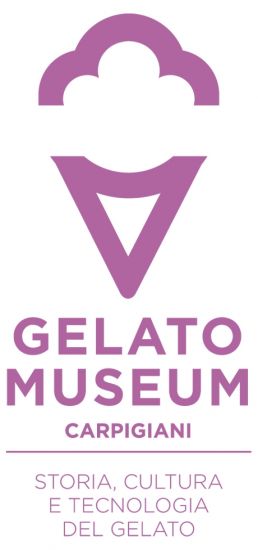 antee it is more delicious, if that is of any consolation. Before heading to Bologna for the year, I crafted my list of “Must See and Do’s,” including both touristy and off-the-beaten track attractions. Occupying one of the top spots on my list (let’s just say it was either 1 or 2…) was the Gelato Museum Carpigiani. Yes, you read that correctly, a museum dedicated entirely to the history, culture and technology of gelato and gelato-making. Bliss.
It is a brand new museum, opening three weeks ago just outside the center of Bologna in Anzola dell’Emilia. Carpigiani is a brand, one of the leading producers of gelato-making equipment (actually, two gentlemen on the tour, also American, use Carpigiani machines in their gelateria in Colorado). The company also founded the Gelato University, based in Bologna but with satellite campuses around the world (Argentina, Germany, Japan, Italy, Netherlands, China, USA, Scotland, and England). Students interested in learning the artisan craft of gelato making and managing a gelateria can enroll in a variety of courses. Have I already looked into the details? You betcha.
antee it is more delicious, if that is of any consolation. Before heading to Bologna for the year, I crafted my list of “Must See and Do’s,” including both touristy and off-the-beaten track attractions. Occupying one of the top spots on my list (let’s just say it was either 1 or 2…) was the Gelato Museum Carpigiani. Yes, you read that correctly, a museum dedicated entirely to the history, culture and technology of gelato and gelato-making. Bliss.
It is a brand new museum, opening three weeks ago just outside the center of Bologna in Anzola dell’Emilia. Carpigiani is a brand, one of the leading producers of gelato-making equipment (actually, two gentlemen on the tour, also American, use Carpigiani machines in their gelateria in Colorado). The company also founded the Gelato University, based in Bologna but with satellite campuses around the world (Argentina, Germany, Japan, Italy, Netherlands, China, USA, Scotland, and England). Students interested in learning the artisan craft of gelato making and managing a gelateria can enroll in a variety of courses. Have I already looked into the details? You betcha.
The Carpigiani Gelato Museum is a center of cultural excellence dedicated to the understanding and study of the history, culture, and technology of gelato and the expertise of the innovators who drove its evolution over the centuries.
Back to the museum- pristine, modern, and FREE for visitors. It also exhibits the history of gelato cone-making and features an enormous wall of gelato-related quotes from the world’s greatest literary, historic, and cultural figures (think Marcel Proust and Madame Bovary). Tours are available in English.
Carpigiani Gelato Museum, the first of its kind to delve into the history, culture, and technology of artisan gelato, a fresh, high-quality food that well represents Italian creativity and excellence throughout the world!
The following are a select few of the highlights from my tour:
- The organization of the exhibition: The museum charts the history of gelato, from 12000 B.C. to modern day. It is organized into color-coordinated epochs, so it is clear as you move through the exhibition when/where you are in its history.
- The exhibition offers varied media- over 20 original gelato-making machines, historical images and documents, and multimedia presentations.
- The exhibition on the history of cone-making, complete with antique cone shipping boxes from various manufacturers, was one of those "I-have-never-thought-about-the-history-of-cone-making-!" moments of brilliance.
- Each epoch is clearly defined- they form small clusters throughout the room. Above each cluster, to aid in the visitor’s visual understanding of the history, are authentic recipes of gelato (or whatever the frozen treat was before gelato became gelato) from that time period. Moving through the exhibit, visitors come to understand the evolution of gelato from a frozen drink of snow and wine for the wealthy and noble (few hanging recipes) to the universal treat (significantly more recipes) enjoyed more ubiquitously. It is a visually effective technique to compliment and emphasize the evolution of the consumption and creation of gelato.
- And last but most certainly not least, sampling. The tour culminates in the Carpigiani Gelato Lab aka the gelateria. They have a beautiful offering, ranging from traditional and popular flavors to flavors unique to the lab and ancient recipes. You can also arrange to celebrate your birthday in the lab (subtle hint to my friends and family...)
Yes, I was most excited by the fact I was at a museum dedicated to one of my guiltiest pleasures. But what I quickly came to appreciate more was that the history of gelato, something I had never actually considered while indulging, is forever preserved and accessible to the entire world. Gelato, ice cream, soft-serve, you name it, is for many, just a fun, summer treat. But for Italy and Bologna especially, the history and consumption of gelato is so central to their cultural and culinary traditions. As we chatted with the chef in the lab and he encouraged us to “focus” as we sampled flavors, I was reminded just how precious museums are to preserving our cultural heritage.
Cutting-Edge Sound Research from One of Italy's Oldest Cities
Greetings from Bologna, Italy! Having completed the Carnegie Mellon portion of my dual-Master’s degree program, I am now enrolled at the 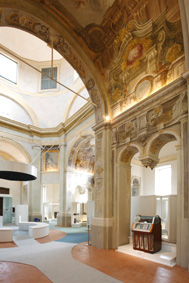 University of Bologna’s Master’s program in Innovation and Organization of Culture and the Arts (GIOCA), aka Cultural Economics. While my blog postings will not be as regular as this past year, I hope to share with our TitA followers relevant news, trends, and projects from across the Atlantic, beginning with la Casa del Suono (House of Sound), in Parma, Italy.
University of Bologna’s Master’s program in Innovation and Organization of Culture and the Arts (GIOCA), aka Cultural Economics. While my blog postings will not be as regular as this past year, I hope to share with our TitA followers relevant news, trends, and projects from across the Atlantic, beginning with la Casa del Suono (House of Sound), in Parma, Italy.
The House of Sound focuses on the technological aspects of sound. It is an avant-garde artistic and technological project dedicated to everyone who listens to music and other sounds broadcast by technological instruments. - Published in a guide by the instituto per i beni artistici culturali e naturali
Housed in a restored church and managed by the city of Parma, la Casa del Suono opened its doors to the public in December 2008. It is a project produced collaboratively by the Casa della Musica and the University of Parma. La Casa del Suono serves as an educational space with a scientific and artistic collection exhibiting the technological evolution and social implications of sound reproduction and transmission; as a research center providing instruments for innovative and futuristic developments, projects, and technologies; and as a leader in scientific and musical activity. In this way, it serves as both a museum and a laboratory.
The three best things about the museum:
1) It is a stunning, modern and bright space with incredible movement and flow. Its collection and layout are neither overwhelming nor perplexingly organized. It is rather simple, actually. There are six “niches” or round rooms (at one time, chapels). Each highlights a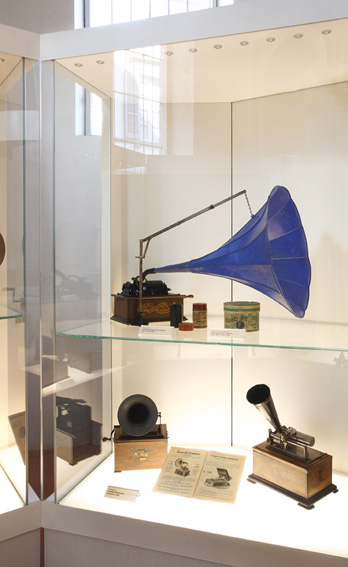 stage in the evolution of sound reproduction and transmission. Each niche houses about 10-14 sound reproduction and transmission devices, ranging from different countries’ first phonographs and radios to portable devices such as the compact disc and the iPod.
stage in the evolution of sound reproduction and transmission. Each niche houses about 10-14 sound reproduction and transmission devices, ranging from different countries’ first phonographs and radios to portable devices such as the compact disc and the iPod.
The niches are: (1) Reproduced Sound: From the Phonograph to the Gramophone (2) Transmitted Sound: The Birth of the Radio (3) Sound at Home: A New Household Appliance (4) Pocket Sound: From the Mobile to the Portable and (5) Sound for All: New Consumer Goods and (6) New Sound: From Analog to Digital.
2) Each niche contains an interactive touch screen from which visitors can select one of the technologies on display in the room and then a song from a set playlist of typical music from that period. The selected song is played throughout the niche, audible to visitors inside the specific niche, but not beyond.
3) The culmination of the visit is a demonstration of the research and technological advancements taking place at the Casa del Suono. Two installations, the Sonic Chandelier and the White Room, apply the theory of Wave Field Synthesis. The Sonic Chandelier uses technology that creates virtual sounds sources that move in the space above the listener. In the White Room, visitors experience the sound quality and movement of 189 speakers positioned at the same height along the perimeter of the room, creating a two-dimensional sonic field and a TRUE surround sound experience.
The Casa del Suono, aside from its architecturally supreme space, extensive collection, and cutting-edge research, asks visitors to think beyond “History of Rock 101” and the evolution of music. It has viewers reflect on sound--how people have historically received sound; how the evolution of transmitting sound and music has transformed family life, politics, and society; and how electronic technologies continue to shape access to culture, art, and science.
If you find yourself in the Emilia-Romagna region of Italy, the Casa del Suono is definitely worth a visit. It is an off-the-beaten track gem. And while you are in Parma for the day, treat yourself to a dish of the region’s pasta covered in Parma’s own parmigiano reggiano cheese. It will be a day for the books; you can trust me on that one.
A Little Sun, Solar Power, and Electricity: Olafur Eliasson at the Tate Modern
A little sunshine can go a long way, or at least, that’s what artist Olafur Eliasson has set out to prove. His exhibition, Little Sun, at the Tate Modern revolves around “solar power, the global energy challenge, light and its importance in and for life.” But at the center of it all, lies not the Sun, but a tiny solar powered lamp called a Little Sun! http://vimeo.com/41830924
Eliasson explains the Little Sun as follows:
Light is for everyone – it determines what we do and how we do it. This is why Frederik Ottesen and I have developed the solar-powered lamp Little Sun. Little Sun is a small work of art with a large reach. One part of the artwork is the lamp and the activities it enables. The other is the successful distribution of Little Sun in off-grid communities, its journey from production to usage.
In some households, there will be a Little Sun that beams during the night. The lamp is also being sold at the Tate Modern and with every purchase, it will be made available at a lower price to those who do not have access to electricity. Furthermore, visitors will be able to create light graffiti using the Little Sun! Yet the luckiest will be those who participate in a blackout event in the Surrealism galleries and use their lamps to see the art!
http://vimeo.com/45573593
But once the lights are turned back on, it’s important to note that Little Sun is not just an exhibition, it’s a for profit company! One that seeks to expand its distribution networks into the depths of darkness to bring electricity, prosperity, and economic growth to all.
Their business model is similar to TOMs in that they will provide a reduced price Little Sun to off-grid communities for every lamp that is bought. Some additional points regarding their business goals are mentioned below:
We will ensure that Little Sun is made available where typical commercial interests would not reach.
We will focus our energy on the point where the need is most: where electricity is unavailable, unreliable, unaffordable, or unsustainable.
We will drive profit to this point of need – far beyond where industry normally goes.
We will help create and nurture small sustainable businesses by supplying them with Little Suns and providing the support they need to create profit.
We aim to make light, energy, and profits available everywhere.
Little Sun is a stellar example of a project that spans the fields of art, science, and business! Here’s to a little sunshine going a long, long way!
Museum Laboratories and Chrome Experiments!
It truly is difficult to write about an experiment untested with a hypothesis unknown, and in a lab unseen. But I’ll make an exception because Google is the scientist behind it. All that we know about the Chrome Web Lab, we know because of a minute long YouTube video: http://www.youtube.com/watch?v=Bhs0YHUPV24
“See the magic of the web brought to life through 5 Chrome Experiments.
Open to the world online. Live from the Science Museum, London.
Launching in beta, summer 2012.”
Instead of making grandiose, naive, and most likely, faulty predictions, all I will say is that where there is Google, there is oodles and doodles of interesting innovation. So this participatory exhibition at the London Museum of Science is one to experience and experiment with.
Coincidentally, another equally experimental space, called the Laboratory for Museum Innovation, is in the works at the Dallas Museum of Art. Having secured $300,000 in funding, the lab will soon launch a round of pilot projects designed to address museological issues such as : Access to Collections; Visitor Engagement and Participatory Culture; Advancing Digital Scholarship; and Transformative Infrastructure. The following was mentioned in DMA’s press release:
“The Laboratory will mount a series of short-term pilot projects that will investigate and focus on enhancing educational resources for K-12 students and teachers; expanding data and information on its collections to aid scholars and visitors; deepening understanding of how visitors encounter works of art; and improving global distribution of content from the Museum and its audiences.”
It’s going to be a summer of scientific experimentation in museums. A fine meeting of cultural and statistical significance!
The Meta-Museum: A Work of Art Depicting Museum Visitors Admiring a Work of Art
Before you head off on summer holiday, take a look at the newest addition to the Museum of Fine Art, Boston’s, Arts of the Americas wing. Warren Prosperi’s realist painting, “Museum Epiphany III,” depicts museum visitors amid the 19th-century paintings and sculptures in the Penny and Jeff Vinik Gallery of the Museum.
Those years I spent studying and copying at the MFA, I got to see the life of the museum. There’s different types of people who are always moving through the gallery. At one point I said, “All this vibrant life in the museum is a painting in and of itself.” So I started a group of paintings about the works of art, and the museumgoers, and their relationship to each other. - Warren Prosperi in a Boston Globe interview
“Museum Ephiphany I” and “Museum Ephiphany II” also feature specific locations in the Museum and were purchased by Museum trustee, David Croll. “Museum Epiphany III” will be one in a series of potentially 25 paintings.
What a turn of events when visitors become the subject of the art they view.
(Photo courtesy: David L. Ryan/Globe Staff)




















